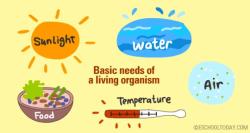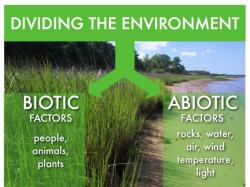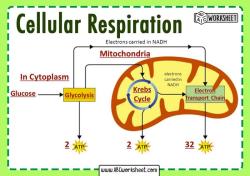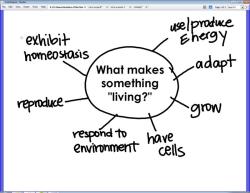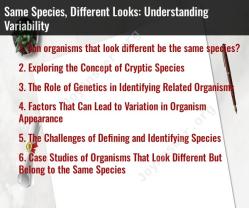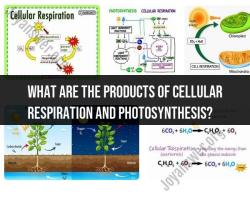What is cellular respiration and the formula?
Cellular respiration is a fundamental biological process that occurs in cells to generate energy in the form of ATP (adenosine triphosphate). It involves the breakdown of organic molecules, typically glucose, in the presence of oxygen to produce ATP, carbon dioxide, and water. Cellular respiration is a key component of the energy metabolism of living organisms, allowing them to extract and utilize energy stored in nutrients for various cellular functions.
Formula for Cellular Respiration:
The overall chemical equation for cellular respiration is as follows:
In words, this equation can be described as:
Process Overview:
- Glucose (C6H12O6): The process begins with the breakdown of glucose, a six-carbon sugar that serves as the primary energy source for cellular respiration.
- Oxygen (O2): Oxygen is required for the complete oxidation of glucose and serves as the final electron acceptor in the electron transport chain.
- Carbon Dioxide (CO2): Carbon dioxide is a byproduct of the breakdown of glucose during various stages of cellular respiration.
- Water (H2O): Water is produced as a result of the electron transport chain and oxidative phosphorylation.
- ATP (Adenosine Triphosphate): ATP is the energy currency of the cell and is produced during the process of cellular respiration.
Stages of Cellular Respiration:
Cellular respiration occurs in three main stages:
- Glycolysis: Takes place in the cytoplasm and involves the breakdown of glucose into pyruvate, producing a small amount of ATP and NADH.
- Krebs Cycle (Citric Acid Cycle): Occurs in the mitochondrial matrix and involves the complete oxidation of pyruvate, producing NADH and FADH2.
- Electron Transport Chain and Oxidative Phosphorylation: Takes place in the inner mitochondrial membrane and involves the transfer of electrons through a series of protein complexes, leading to the production of ATP through oxidative phosphorylation.
Key Points:
- Cellular respiration is essential for extracting energy from nutrients and converting it into a form (ATP) that cells can use for various functions.
- The process is aerobic when oxygen is present, and anaerobic processes (such as fermentation) occur in the absence of oxygen.
- Cellular respiration is a dynamic and regulated process that plays a crucial role in the energy balance of living organisms.
In summary, cellular respiration is a vital biochemical process that enables cells to harvest energy from organic compounds, ultimately facilitating the energy needs of living organisms. The chemical equation provides a concise representation of the inputs and outputs involved in this complex and highly regulated process.
What is the process of cellular respiration and its significance?
Cellular respiration is a series of metabolic reactions that take place in living cells to convert chemical energy stored in nutrients, such as glucose, into adenosine triphosphate (ATP), the cell's energy currency. ATP is used to power various cellular processes, including muscle contraction, protein synthesis, and active transport. Cellular respiration is a crucial process for all living organisms, as it provides the energy necessary for life's functions.
How does cellular respiration generate ATP in living organisms?
Cellular respiration generates ATP through two primary mechanisms: substrate-level phosphorylation and oxidative phosphorylation.
Substrate-level phosphorylation: This process involves the direct transfer of a phosphate group from a high-energy molecule to ADP, forming ATP. This occurs during glycolysis and the Krebs cycle.
Oxidative phosphorylation: This mechanism utilizes the energy released from the electron transport chain to drive the synthesis of ATP. The electron transport chain generates a proton gradient across the inner mitochondrial membrane, and this gradient is used to power a protein complex called ATP synthase, which directly produces ATP from ADP and inorganic phosphate.
What are the stages involved in cellular respiration, and what occurs during each stage?
Cellular respiration occurs in four main stages:
Glycolysis: This stage takes place in the cytoplasm and involves the breakdown of glucose into two pyruvate molecules. Two ATP molecules and two NADH molecules are produced during glycolysis.
Pyruvate oxidation: Pyruvate molecules are transported into the mitochondria, where they undergo oxidation to form acetyl-CoA. This process releases carbon dioxide and produces NADH.
Krebs cycle: Acetyl-CoA enters the Krebs cycle, a series of reactions that occur within the mitochondrial matrix. The Krebs cycle further oxidizes acetyl-CoA, releasing carbon dioxide and producing NADH, FADH2, and GTP (a high-energy molecule similar to ATP).
Electron transport chain: NADH and FADH2, generated from glycolysis and the Krebs cycle, transfer their electrons to the electron transport chain, a series of protein complexes located in the inner mitochondrial membrane. The energy released from the electron transport chain is used to pump protons across the membrane, creating a proton gradient.
Oxidative phosphorylation: The proton gradient generated by the electron transport chain drives the synthesis of ATP through ATP synthase, a protein complex located in the inner mitochondrial membrane. This process directly converts ADP and inorganic phosphate into ATP.
How does cellular respiration relate to the metabolic processes of the cell?
Cellular respiration is a central metabolic process that is tightly linked to other metabolic pathways in the cell. It provides the energy necessary for various cellular functions, including:
Muscle contraction: ATP is used to power the sliding of actin and myosin filaments, generating muscle contractions.
Protein synthesis: ATP is required for the ribosomes to translate mRNA into proteins.
Active transport: ATP is used to pump molecules against their concentration gradient, enabling the movement of essential substances across cell membranes.
Biosynthesis: ATP provides the energy required for the synthesis of various molecules, such as lipids, carbohydrates, and nucleic acids.
What environmental factors influence the rate of cellular respiration?
Several environmental factors can affect the rate of cellular respiration:
Temperature: Cellular respiration is a temperature-dependent process. As the temperature increases, the rate of enzyme activity increases, leading to a faster rate of cellular respiration.
Oxygen availability: Aerobic respiration requires oxygen as an electron acceptor. In oxygen-deprived environments, cells switch to anaerobic respiration, which is less efficient and produces fewer ATP molecules.
Substrate concentration: The rate of cellular respiration is influenced by the availability of the substrate, usually glucose. Higher glucose concentrations generally lead to faster rates of cellular respiration.
Hormonal regulation: Hormones can also regulate the rate of cellular respiration. For example, adrenaline stimulates glycogen breakdown and glucose production, leading to increased cellular respiration to provide energy for muscle activity.
Cellular respiration is a fundamental process that underlies the energy production and metabolic activities of all living cells. By understanding the mechanisms and regulation of cellular respiration, we gain insights into the intricate workings of life and its adaptation to various environmental conditions.





